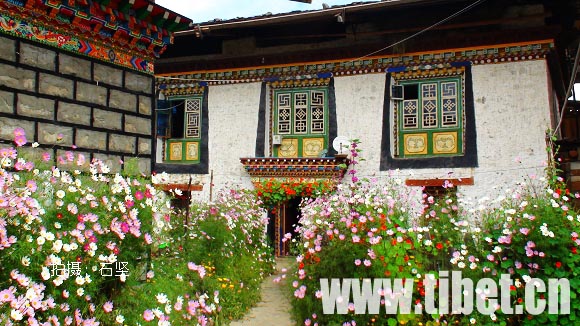
House of a rural Tibetan named in Nyingchi Prefecture, Tibet Autonomous Region, photo from China Tibet Information Center.
The per-capita housing floor space in Tibet has largely extended to 32.7 sq.m. in urban areas, and 22.87 sq.m. in rural areas.
Before the peaceful liberation of Tibet, more than 90 percent of Tibet's residents had no private housing, the farmers and herdsmen had very poor living conditions, and the per-capita housing of urban dwellers was less than three sq.m.
With money scarce, the central government has earmarked special funds for construction of urban areas after the peaceful liberation of Tibet.
From 1979 to 1993, the Chinese central government has allocated a total of 1.17 billion yuan as funds to build 3.15 million sq.m. of reinforced concrete suites in Tibet.
Now, people's living condition as well as concepts in housing have witnessed a drastic changes against the booming property market in the region.
With the construction of Anju Housing Estate in eastern Lhasa suburb in 1996, the fledging real estate market in Tibet started.
The number of companies engaged in real estate has risen from 6 to 82 as yet in 13 years, being capable of constructing not only simple apartments but luxurious villas, hotels and office buildings, with the investment for that hitting 1.29 billion yuan in 2008.
Moreover, the total floor space under construction reached 13.52 million sq.m., up 17.8 per cent compared with that of 2007.
This year, about 530 million yuan was pumped into the real estate market, up 59 per cent year-on-year, and 1,328 suites of complete departments were sold in the first half of 2009.
Due to the social and economic stagnancy resulted from the feudal serfdom in old Tibet, bungalows built before 1979 were mainly made of woods, bricks or tiles, and neither kitchen nor washroom were equipped.
The central government will continue to increase its investment for Tibet in the coming years to promote the living condition.
